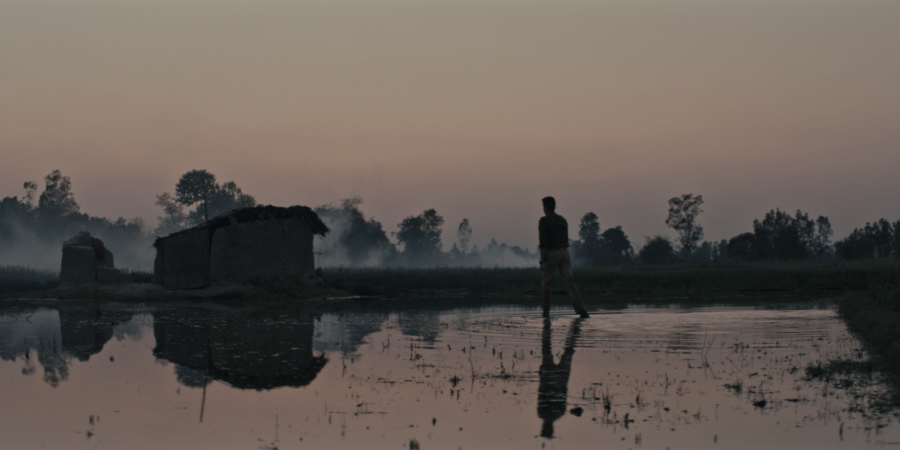On the surface, Article 15 is a straightforward – though very carefully constructed – police procedural film, set in contemporary India. It is not as simple as it appears, though, having more depth and quality than a viewer might first expect. It follows the arrival of Ayan Ranjan (Ayushmann Khurrana) on his first day in a new post, heading a rural branch office of the Indian Police Service. He’s clearly not used to being so far away from the city, and has to acclimatise to the culture while leading his first case (and missing his girlfriend).
The case related to three young women in their teens who had gone missing just before Ranjan’s arrival; not long after his arrival, two of them (cousins) are found hanged in a nearby tree. It is revealed that they worked in a local tannery, and were from Dalit families; Dalit being “untouchable”, or outside the caste system. Ranjan is quite unused to castes being an issue, and realises how different things are in rural areas. He discovers that his officers had not taken it seriously when the girls were reported missing. And is shocked to discover how quickly they want to close the case when the missing persons case escalates to homicide.
The title of the film refers to Article 15 of the Indian constitution, which prohibits discrimination on grounds of religion, race, caste, sex or place of birth. Such discrimination was clearly rife throughout the local police force (and indeed whole town) as presented in the film. Which was based on a number of real events in India (it was not intended as a dramatization of a single event). For me, a white British film-goer, it opened my eyes to issues that I knew little about, and did not know were still current at all.
Since watching Article 15, I’ve discovered some controversy around how it has been presented in the media. I cannot comment on the validity of those reports, or on how the film presents certain groups, as Article 15 is my first real exposure to such issues. Instead, I shall comment only on the film itself.
And the film was impressive.
Director Anubhav Sinha takes a seemingly simple story and (over approximately two hours) gradually expands on the locale, the people involved and their complex motivations. Sinha produced and wrote the film, too, and it all holds together beautifully. There are no loose ends, no leaps in story logic, no smiley singing that jars with the tone of the plot, nothing rushed and nothing over-explained.
There is humanity in the perpetrators, and compassion for people with a wide range of lifestyles. Judgement is made only towards those who themselves hold prejudice. The ending may be a little on the neat side, but it was encouraging too: I like to think Sinha is seeking a better India, rather than damning it.
The acting was superb, universally; helped, of course, by fine writing of the characters. Khurrana was believable both as the aloof officer from the city and – as the story developed – as the man trying to understand his colleagues and seek justice for the local people at the same time. He wrestled with doublethink, and talked it over with his long-distance girlfriend (like Inspector Montalbano discusses work with Livia); getting her wisdom and perspective along the way:
I don’t want you to be a hero. I want you to be a man who doesn’t wait for a hero.
The secondary cast members bring their own quality all around Khurrana’s lead. Nishad (Mohammed Zeeshan Ayyub) the Dalit leader, Jatav (Kumud Mishra) the outcaste who managed to secure a police position and everyone in between provided great support. Apart from the victims, there were only two female roles of note: Ranjan’s girlfriend (Isha Talwar) and Jatav’s fiancée (Sayani Gupta); but interestingly, their contrasting lifestyles and the way they supported their respective partners presented each of their backgrounds in a nutshell.
Most memorable of all was the cinematography, from Ewan Mulligan. He made the most of light and depth in many scenes (I recall the sunrise as I type), and the film could have been unremarkable without his contribution. Instead, it belongs in cinemas worldwide, not just in Asia.
At several points during Article 15, I was reminded of Norman Jewison’s classic film In the Heat of the Night. The sunlight over the swamps, and the way the local people closed ranks around a city officer who didn’t stay sheltered for long… well, I’m sure you can see why that sixties title came back to me. In the Heat of the Night showed viewers that prejudice endured more strongly in some areas of the United States, and the film itself has endured (as has the book it was based on): I do hope Article 15 has a similar impact, as it certainly touched me.

